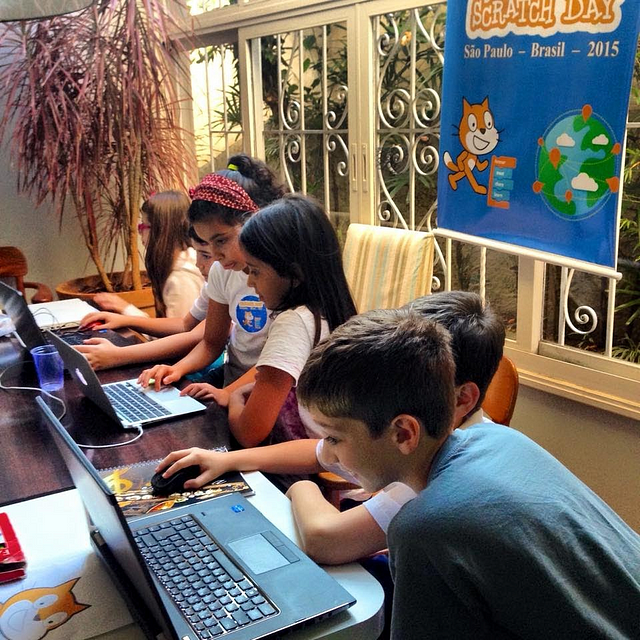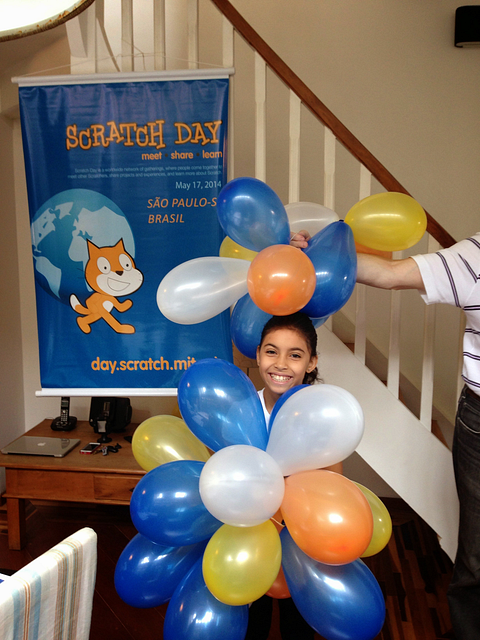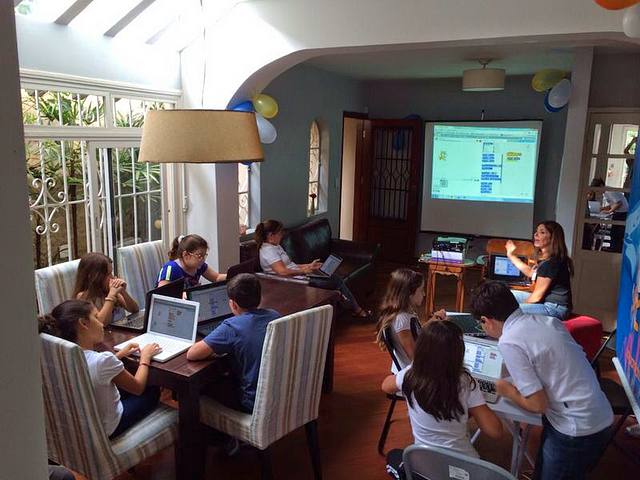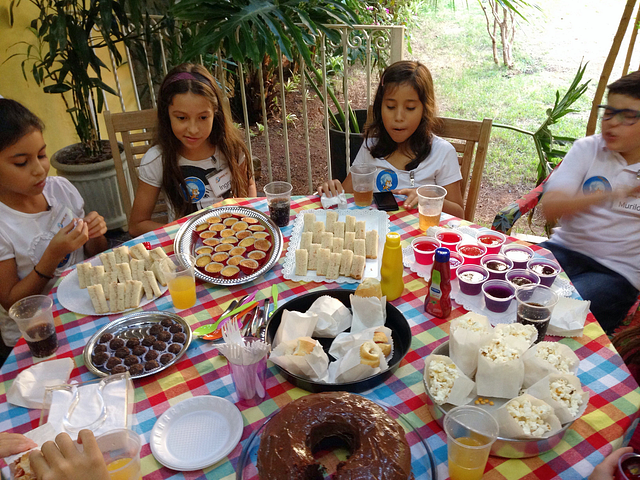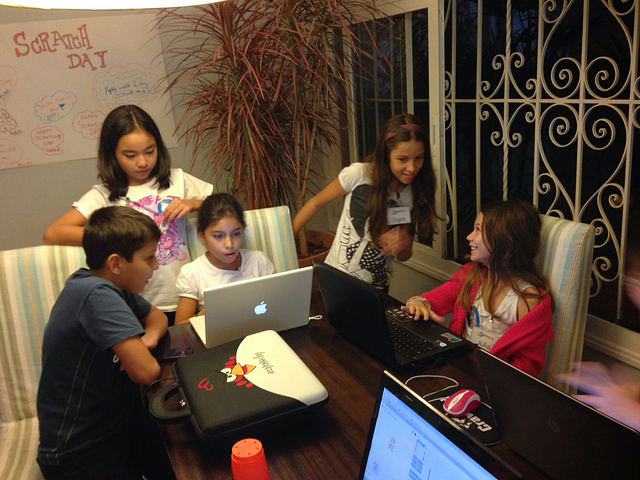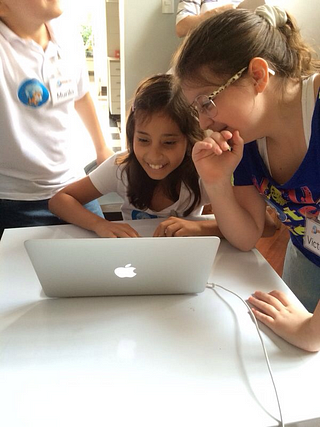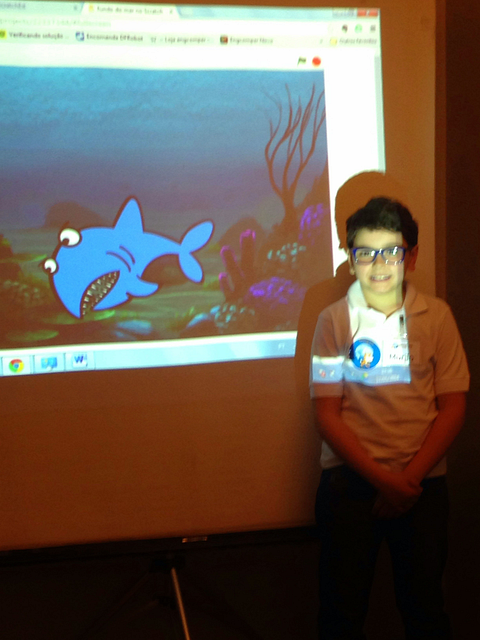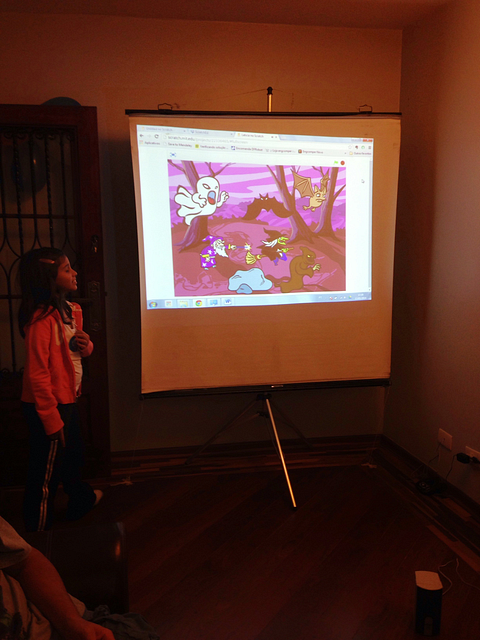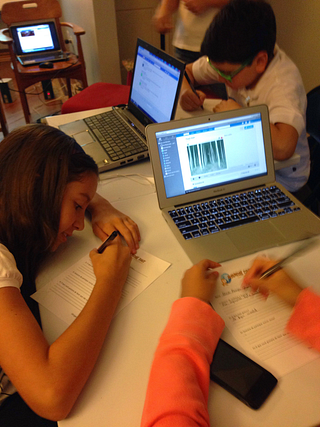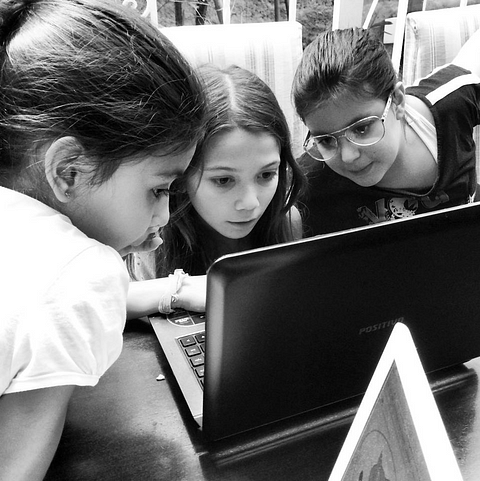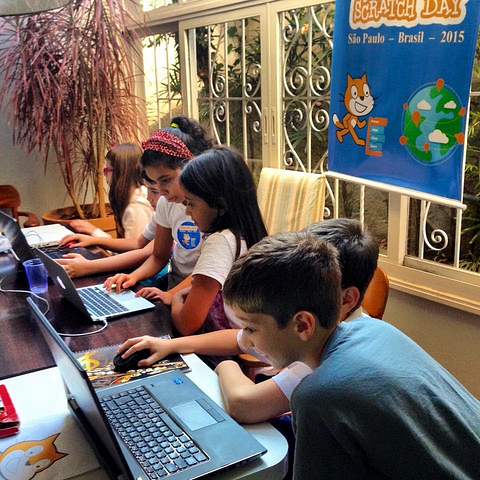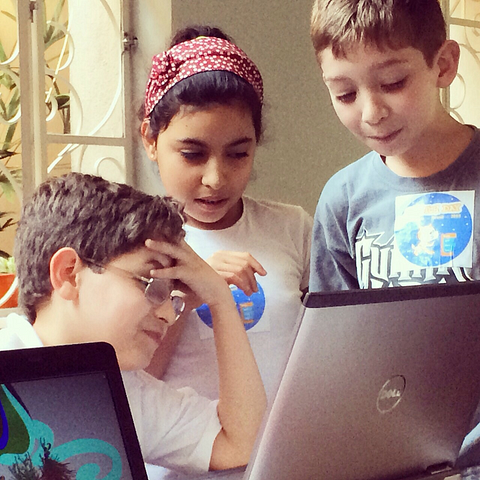How to Host a Small Scratch Day
How to Host a Small Scratch Day
An interview with Scratch Day host Heloisa Zalcberg, orginally posted on the Scratch Foundation blog.
By Saskia Leggett
This post is the fourth in a series on tips for hosting a Scratch Day. This year, Scratch is celebrating our 10th Anniversary during the month of May, but you can celebrate any day of the year!
Scratch Days come in all shapes and sizes — from big ones hosted at museums or libraries, to little ones hosted in classrooms or at home. While some hosts opt for larger events, planning a Scratch Day does not require finding a venue, securing sponsors, or corralling a team. You can celebrate Scratch in any space where your community can gather together.
To gain more insight into what it’s like to organize a small-scale Scratch Day event, we asked Heloisa Zalcberg, a host from São Paulo, to tell us more about her experience.
For the past 10 years, Zalcberg has worked with children and teens through her program Educação Criativa (Creative Education) to help their learning and development in school. Her work aims to recover her students’ self-esteem, motivate their learning, provide study skills, and help them become self-taught students. She first learned about Scratch after participating in the Learning Creative Learning (LCL) and Creative Computing online courses in 2013, and has hosted Scratch Days in her home in São Paulo since then.
How did you hear about Scratch Day?
Since participating in LCL, I have always hosted Scratch Days. In 2013, I hosted my first Scratch Day. I got a lot of help and ideas from many LCL online community peers to organize the first one.
What is your favorite thing about Scratch Day?
My favorite thing about Scratch Day is the party atmosphere — this happy commemoration connecting children, students, teachers, and parents. It is a spirit of cooperation, sharing, learning, creativity, and happiness that goes beyond the boundaries of countries and cultures. It is just wonderful to participate in an event like this.
Why did you decide to host a Scratch Day event?
Back to 2013, little was said about Scratch in Brazil. I wanted to spread the word to share what I had just learned. I did not have a school or formal space to host a Scratch Day, so I did it at home. I invited my nine-year-old niece’s classmates. I contacted the mothers to explain what their children would be doing. It was quite difficult to explain: it would be like a birthday party, where the children would learn how to code. I asked them to bring their laptops, but many of them didn’t have one. So, I borrowed computers from my family and friends to be used by the kids on Scratch Day.
Can you describe last year’s event?
As in past years, the event was like a big party. I decorated the room with Scratch-colored balloons and pens to write birthday messages to the Scratch Cat. Since it was the fourth official Scratch Day for the most of the kids, we did more complex activities, such as using some Scratch extensions, LEGO WeDo, and Makey Makey.
What kinds of activities do you do?
When children are waiting for the others to arrive, they write birthday messages to Scratch Cat on paper panels to get into a celebratory mood.
After a small introduction among the kids, I give them some Scratch activities, asking them to animate their own names, to create a new sprite, among other activities. I also use Scratch Cards, which are a good way to check what skills they already know and to get a new challenge.
We have a half hour break for a delicious snack with cake, popcorn, hot-dogs and everything else children love, in another room.
After the break, I challenge them with a more complex project, generally asking the children to work in pairs. Last time, I used a strategy that worked very well: In the first part of the activity, they had to create a new sprite, animate it, and add voice or sounds. In the second part, they had to choose someone else’s sprite they liked and “borrow the code,” using the Scratch backpack feature, and then they used that to remix their own sprites. In the last part of the activity, they composed a short conversation between the remixed sprites, while in pairs. They were very excited with the idea of “borrowing” code from others, and they started exploring Scratch for other projects to remix and do the same thing. They just loved it!
When children finish their projects, they present to the group.
Here’s a timeline of the event:
- Reception: birthday messages and stickers
- Children introduce themselves
- Scratch video presentation and overall explanations (about 10 minutes)
- Warm up activities (Scratch Cards with small, individual projects)
- Snack break
- Big project workshop
- Project presentations
- Certificates delivery and final considerations
- Reflexion and evaluation prompts
What is it like to host an event in your home?
It is great! It’s similar to organizing a birthday party, where you have the opportunity to get closer to the kids in an informal place. I also find that their parents are more confident with letting their children celebrate in a family place. Many parents just can’t believe that all that is for free.
What is your planning process like?
In advance, I prepare Scratch Day banners and stickers and balloons for the room decoration; Scratch Day certificates for each participant; craft materials and posters for birthday messages; snacks; and computers.
How else do you use Scratch through the rest of the year?
Throughout the rest of the year I host Scratch workshops with similar activities and strategies used for Scratch Days. Besides these workshops, I also use Scratch as a tool for helping students with learning, such as literacy, storytelling or even more complex concepts like this one, about osmosis.
What advice would you give to other Scratch Day hosts?
- Plan the activities and needed materials in advance.
- Be sure to have enough computers, at least enough to be used in pairs.
- Decorate the space with balloons and have activities for the children who arrive first.
- Provide a good snack and personalized participation certificates.
- Be sure that all kids are able to follow the activities. Help and encourage them always.
- Don’t be afraid of not knowing everything about coding. Invite them to explore new adventures.
- Have fun!

